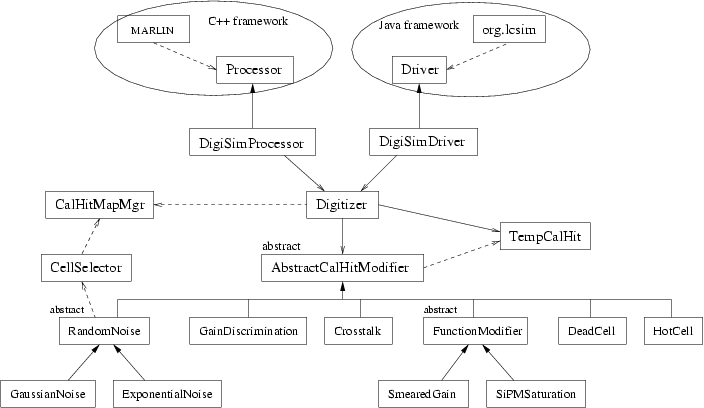
Figure 1: Class diagram for the digitization simulation package DigiSim. Please note the inheritance relationships represented by the solid arrows and the containment (usage) relationships represented by the solid (dashed) line and open arrows. AbstractCalHitModifier, RandomNoise and FunctionModifier are abstract classes, defining the interfaces to be followed by their subclasses.
